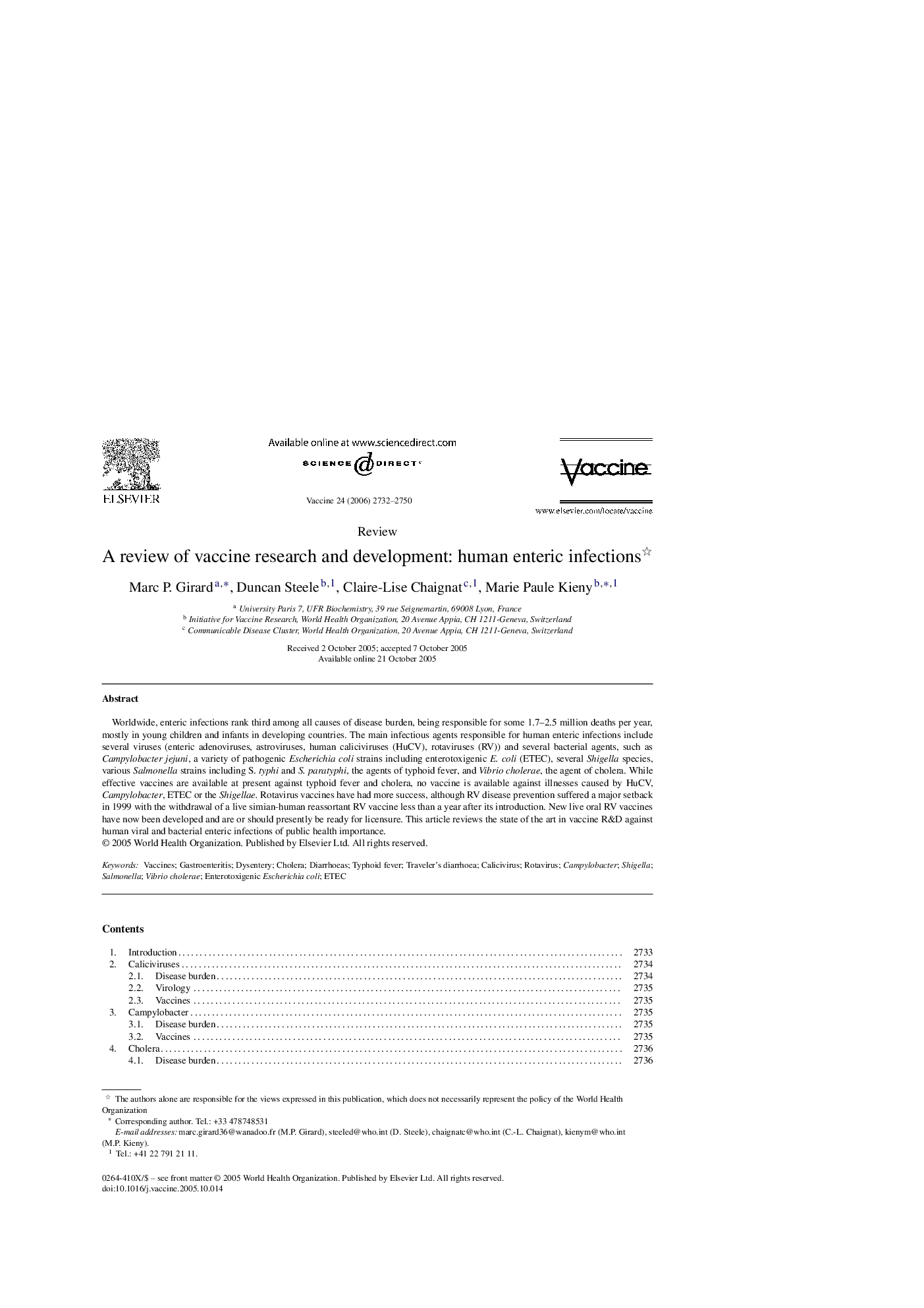| Article ID | Journal | Published Year | Pages | File Type |
|---|---|---|---|---|
| 2410397 | Vaccine | 2006 | 19 Pages |
Worldwide, enteric infections rank third among all causes of disease burden, being responsible for some 1.7–2.5 million deaths per year, mostly in young children and infants in developing countries. The main infectious agents responsible for human enteric infections include several viruses (enteric adenoviruses, astroviruses, human caliciviruses (HuCV), rotaviruses (RV)) and several bacterial agents, such as Campylobacter jejuni, a variety of pathogenic Escherichia coli strains including enterotoxigenic E. coli (ETEC), several Shigella species, various Salmonella strains including S. typhi and S. paratyphi, the agents of typhoid fever, and Vibrio cholerae, the agent of cholera. While effective vaccines are available at present against typhoid fever and cholera, no vaccine is available against illnesses caused by HuCV, Campylobacter, ETEC or the Shigellae. Rotavirus vaccines have had more success, although RV disease prevention suffered a major setback in 1999 with the withdrawal of a live simian-human reassortant RV vaccine less than a year after its introduction. New live oral RV vaccines have now been developed and are or should presently be ready for licensure. This article reviews the state of the art in vaccine R&D against human viral and bacterial enteric infections of public health importance.
